Salt Grains for Muscle Gains?
Does liberally salting your food help you pump more iron in the gym? Registered Dietitian, Debbie James, investigates the claims!
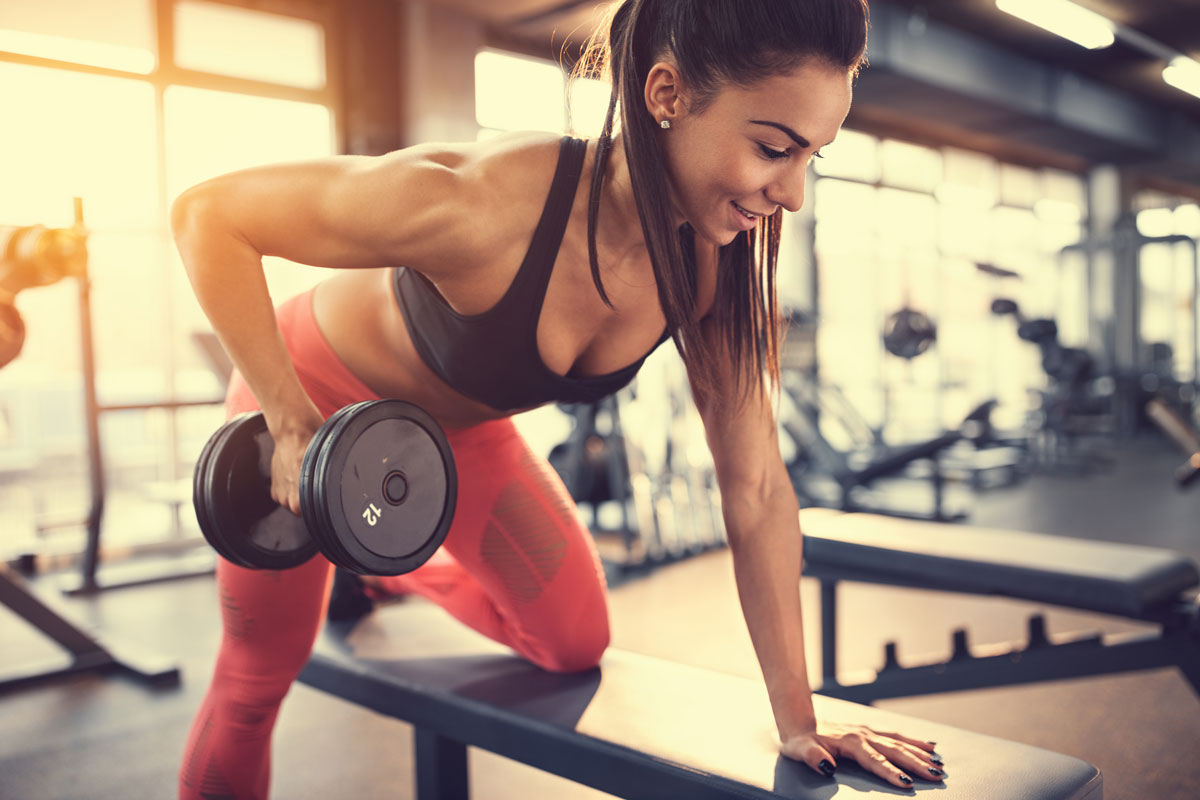
When a championship or trophy is on the line, every opportunity for an athlete to practice makes a difference. The same is true of exercise sessions in preparation toward achieving a physical goal. Too many people run through their workout just to check it off as done instead of utilizing the workout to its full potential. Instead, treat the session like elite athletes do – as a rehearsal for the biggest physical performance they’ll do that season.
“Make each day your masterpiece“ – John Wooden
Effort, drive and determination are often attributes associated with athletes pushing through tough practices. Hence, the “no pain, no gain” exercise motto. But enthusiasm, purpose and intense focus may be just as important for progress1. For successful workouts, having a positive attitude, a goal for that session and focused attention are key.

Three Key Factors You Need


01.
Enthusiasm is a cornerstone of the late basketball coach John Wooden’s famous Pyramid of Success2. He described enthusiasm as that “which infuses hard work with inspired power.” Without the passion and joy for what you are doing, you can easily slip into worker bee mode to get your workout over with. Enthusiasm is a spark that ignites the willingness to proceed. It’s characterized by feelings of excitement and high levels of enjoyment3. If you’re not loving what you are doing, find another way of doing it or switch up your workouts.

02.
Purpose Personal meaning powers action – it’s caring enough about what you’re doing. Finding your purpose goes beyond the outcome you seek, but the “why” you are striving for it to begin with. Putting your personal values as top priority can lead you to perform better4. Nothing else can take precedent during your exercise session. Purpose is supported by the belief that you are responsible for your own success. Having an identified purpose helps you overcome pressure and stress and to bounce back from losses.
“The successful warrior is the average man, with laser-like focus.“ – Bruce Lee

03.
Intense Focus With digital distractions it’s easy for one’s mind to wander off course. Sport psychologists say that being in the moment is crucial for effective practice5. Worry about what you can execute in the present instead of dwelling on the past. Pay greater attention to the action you’re doing instead of smartphone alerts, the environment around you or thoughts of the outcome. Whereas you might get away with reading while doing some low-intensity steady-state cardio, strength-training requires focus6.
Definition: Practice is the repetition of an action with the goal of improvement.
All that is not to say that the treadmill setting or weights have to be different or more than your last workout. On the contrary, repetition with good form allows you to improve on quantity or speed later. The TED-Ed video entitled “How to practice effectively…for just about anything” by Annie Bosler and Don Greene has an expanded explanation for the reasons why repeated practice works — one of them is neural processing. You actually create the neural pathway to do an action unconsciously by repeating it until the action becomes reflexive.
Treating your workout like a household chore to get done will likely make the session, well, …a chore. Consider each exercise session a rehearsal – a chance to fix mistakes and move forward toward a winning performance, even if you are the only audience. Embrace what you’re doing, make your purpose a priority and narrow your attention to your present action.
References


Hi there, I work out at the Richmond Hill LA Fitness location. I was wondering if you could tell me about BCAA powders… what are the benefits of consuming these during workouts? Also, many of them contain Taurine which I heard is harmful. Is that true?
Thanks in advance!!
– Josh M.

Branched chain amino acids (BCAAs) are a group of three essential amino acids (leucine, isoleucine and valine) required for creating new muscle, along with the other six essential and eleven non-essential amino acids. Muscle protein constantly turns over, meaning that protein breakdown is occurring simultaneous to protein synthesis.1
Supplemental BCAAs may reduce the amount of protein breakdown and notably leucine signals the synthesis process. However, this doesn’t necessarily equate to direct muscle building or growth, termed “anabolism.” Most studies compared BCAAs to taking non-protein placebo.
It’s important to note that the availability of the other essential amino acids can limit synthesis1, thus BCAAs don’t act alone. Due to the nature of protein construction, complete protein strands (found in solid food) contain not only BCAAs but other amino acids. Not surprisingly, research including whole proteins post-workout show similar gains in muscle protein synthesis2.
In summary, it makes sense to eat full proteins (such as whey, casein or soy) with additional BCAAs rather than ingest BCAAs exclusively to promote anabolism.
Supplemental BCAA powders generally offer 5 grams BCAA per serving, while capsules may offer as little as 1.5 grams BCAA. In regards to the amino acid taurine, I advise limiting supplemental intake to 3000 mg (3gm) daily, consistent with research3. That level is not likely to be found in strictly BCAA supplements but may be found in pre-workout formulas with other compounds.
Resources:
– Debbie J., MS, RD
This article should not replace any exercise program or restrictions, any dietary supplements or restrictions, or any other medical recommendations from your primary care physician. Before starting any exercise program or diet, make sure it is approved by your doctor.
Some questions have been edited for length and/or clarity.
 Have a nutrition question? Our registered dietitian is ready to help!
Have a nutrition question? Our registered dietitian is ready to help!
Email nutrition@lafitness.com or submit your question below and it may be featured in an upcoming article!
Does liberally salting your food help you pump more iron in the gym? Registered Dietitian, Debbie James, investigates the claims!
Debbie James, RDN, helps answer a question about energizing snack options to pull athletes through the second half of a high energy workout.
Registered Dietitian, Debbie James, helps answer a reader’s question about a good nutrition guide for a healthy pregnancy.
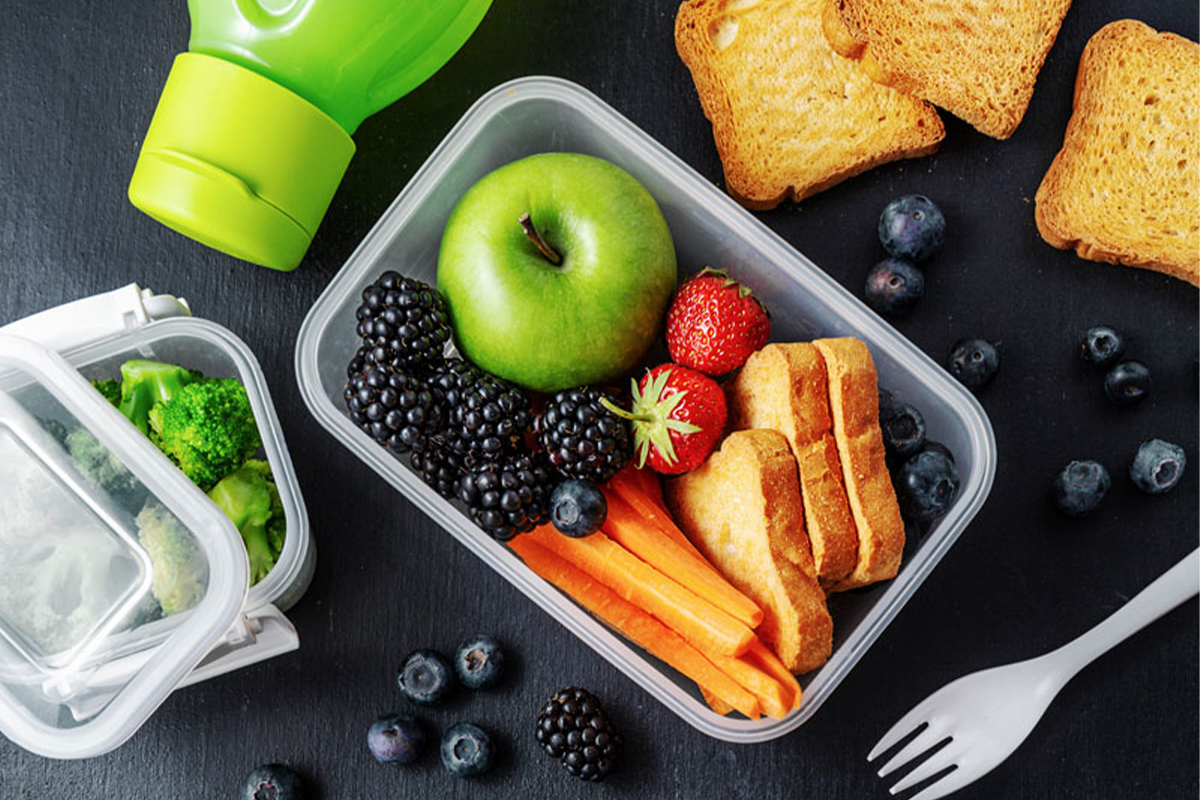
Snacks can easily be something to grab-n-go! Whether you invest a little effort to prep snacks ahead of time or purchase one of the many available options at the grocery store, a quick snack “helps bridge the gap between meals,” as Kimberlain puts it.
It used to be that eating between meals was a “no-no.” Snack food was often equated with junk food. But no more! Eating healthy snacks in between meals can give you an energy boost, keep you satisfied and help prevent overeating at meals. The right snacks can add fiber and nutrients to your day without an abundance of calories.
Many people know this but still end up stretched thin and starving by the next meal or dragged down by fat and calories. Why? Several obstacles can stand in the way of snacking smart. We dug in with the help of Amy Kimberlain, RD, Spokesperson for the Academy of Nutrition and Dietetics in Miami, Florida, to find solutions for seven common snack problems.


Follow These 7 Solutions

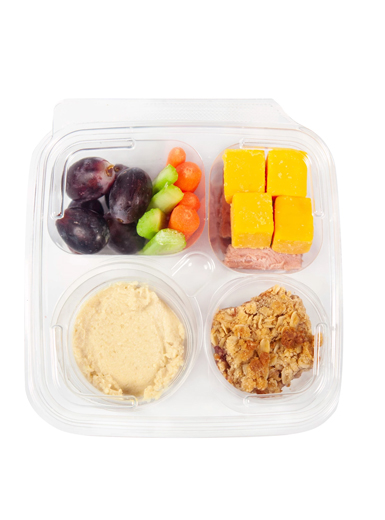
01.
NO PREP TIME
Snacks can easily be something to grab-n-go! Whether you invest a little effort to prep snacks ahead of time or purchase one of the many available options at the grocery store, a quick snack “helps bridge the gap between meals,” as Kimberlain puts it. She suggests protein packs, nuts pre-portioned with dried fruit or simply a banana or apple. An individual tuna salad kit complete with crackers is another quick option. Even a package of peanut butter sandwich crackers or small 1.5 ounce energy bar works.
02.
DIETING
If you think you need to avoid snacking to curb overall intake, think again. Kimberlain comments that “going too long without eating may sometimes lead to overeating.” Crunchy fruit or vegetables provide bulk with fewer calories, such as fresh fruit bowl, celery sticks, baby carrots, sliced cucumbers, mini bell peppers, and sugar snap peas. Those are light enough to combine with a couple tablespoons yogurt dip or hummus. Items under 150 calories like these Avocado Turkey Roll Ups and Strawberry Coconut Energy Bites, as well as low-sodium V8® juice, also serve for calorie-controlled snacking.


03.
CARDIAC DIET
Sensible snack choices can be part of a heart-healthy diet! Low-saturated fat foods that have moderate protein or high fiber will satisfy between meals. Pick items with 2 or more grams of fiber per serving. Functional foods that include omega-3 fatty acids or calcium + vitamin D are also heart-smart. Our top recommendations include grapes & almonds, peach & nonfat cottage cheese, and a whole-wheat waffle with 1 Tbsp. peanut butter and a few berries. Create your own 3-ingredient trail mix with 1 cup pretzels or dry cereal, 1/4 cup raisins or other small dried fruit, and 1/4 cup cashews or pistachios; makes 4 servings.
04.
ATTACK OF THE MUNCHIES
Having a salty, crunchy snack craving can lead you to grab a not–so–healthy treat. Goodbye chips — Kimberlain states, “There are several savory foods you can purchase ahead of time and portion out at home to meet your salt cravings. This way you can grab a healthy snack to take to work, instead of grabbing something salty from the vending machine.” Find a microwave low-sodium popcorn in single-serve (usually 100 calorie) bags. Try seasoned roasted chickpeas, dry roasted seaweed sheets or freeze dried crunchy veggies. Aim for 200 mg or less total sodium per snack.
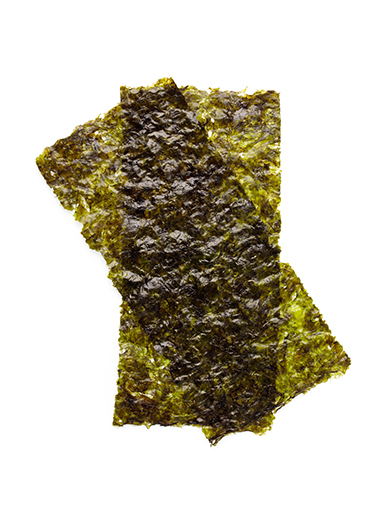
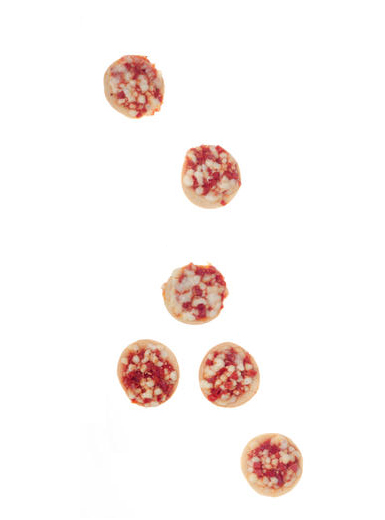
05.
MEALTIME MISHAP
When you’ve missed a meal or are running a couple hours behind, cramming in a full meal before yet another one later may do more harm than good. Mini-meals that are filling yet calorie-controlled resolve this situation. Here are some of our favorites… Half quesadilla: whole wheat tortilla with a slice of reduced fat cheese, leaves of spinach and a spoonful of salsa, folded and pan warmed. Mini pizza: grain bagel half topped with marinara sauce and shredded low fat cheese, broiled until cheese is melted. Potato bites: split 4 creamer potatoes, scored and microwaved open-faced with broccoli bits, then topped with nonfat cottage cheese and a squirt of hot sauce.
06.
DESSERT DOWNFALL
Instead of giving in to your sweet tooth’s urge for a dessert, consider healthy alternatives. Kimberlain says, “While it’s OK to indulge your cravings every now and then, there are healthier options out there that will help satisfy these cravings.” Try a slice of cinnamon toast or a few graham crackers instead of rich baked goods. Opt for flavored yogurt instead of ice cream or pudding. For a fruitier flavor, pop berries into your mouth for sweetness with each bite or mix diced apples with a couple spoonfuls light whipped cream and walnuts.


07.
NUT-FREE AND VEGETARIAN
There’s more to snacks than carb-loaded starches like pretzels for vegetarians who also need to avoid nuts. Protein helps you feel fuller longer, and meat-free protein sources are no exception. Kimberlain shares that “there are plenty of quick, nut-free snack options that pack lots of protein.” Her top suggestions are edamame, hard-boiled egg, hummus (or other bean dips), and cheese with fruit. A high protein skyr or Greek yogurt with granola is another good option, as is a sunflower seed butter + sliced banana–topped English muffin half.


Hi, I was wondering on how to select the correct macro grams for my diet.
I am a member of team Canada world baton team and train for the sport 4 days a week for about 5 hours. I also attend weekly yoga classes and do cardio workouts 3x a week along with some basic weight training 3x a week. I am 24 years old, 5 foot 6 inches, 160 lbs. and eat between 1,500-1,800 calories.
Thank you
– Lindsay B.

You are undereating calories compared to your estimated energy needs* given your age, anthropometrics and stated workout routine making your first priority to meet minimum recommended protein amounts.
Based on your stated level of exercise, protein requirements will fall in the range of 1.2-1.5gm/kg, which calculates to 87-110 grams of protein per day (<26% energy intake). However, because you’re possibly not meeting energy needs with adequate carbohydrate and fat, it’s safe to increase protein to 2.0gm/kg daily.
Carbohydrate should comprise about 50-60% of your energy intake. For your stated caloric consumption, that would calculate to 225 grams carbohydrate daily (1800 x 0.5 ÷ 4cals/gm). Remember, that is a baseline amount given my suspicion that your energy intake is low.
A healthy fat intake may range from 20-35% of energy consumed. If we take the average of your recommended protein plus the carbohydrate total above, that’s 1292 calories (323gms x 4cals/gm) leaving you with 508 calories for fat. Those 56 fat grams should be from healthy unsaturated sources, preferably plant foods like avocado, oils and coconut.
* Energy needs calculated from Harris-Benedict or IOM equations are 2600-2800 calories per day.
Resources:
Kerksick, CM and Kulovitz, M. (2013) Requirements of Energy, Carbohydrates, Proteins and Fats for Athletes. In Nutrition and Enhanced Sport Performance Chapter 36, (pp. 355-366).
Webb D. Athletes and Protein Intake. Today’s Dietitian June 2014; 16 (6): 22.
– Debbie J., MS, RD
This article should not replace any exercise program or restrictions, any dietary supplements or restrictions, or any other medical recommendations from your primary care physician. Before starting any exercise program or diet, make sure it is approved by your doctor.
Some questions have been edited for length and/or clarity.
 Have a nutrition question? Our registered dietitian is ready to help!
Have a nutrition question? Our registered dietitian is ready to help!
Email nutrition@lafitness.com or submit your question below and it may be featured in an upcoming article!
Does liberally salting your food help you pump more iron in the gym? Registered Dietitian, Debbie James, investigates the claims!
Debbie James, RDN, helps answer a question about energizing snack options to pull athletes through the second half of a high energy workout.
Registered Dietitian, Debbie James, helps answer a reader’s question about a good nutrition guide for a healthy pregnancy.
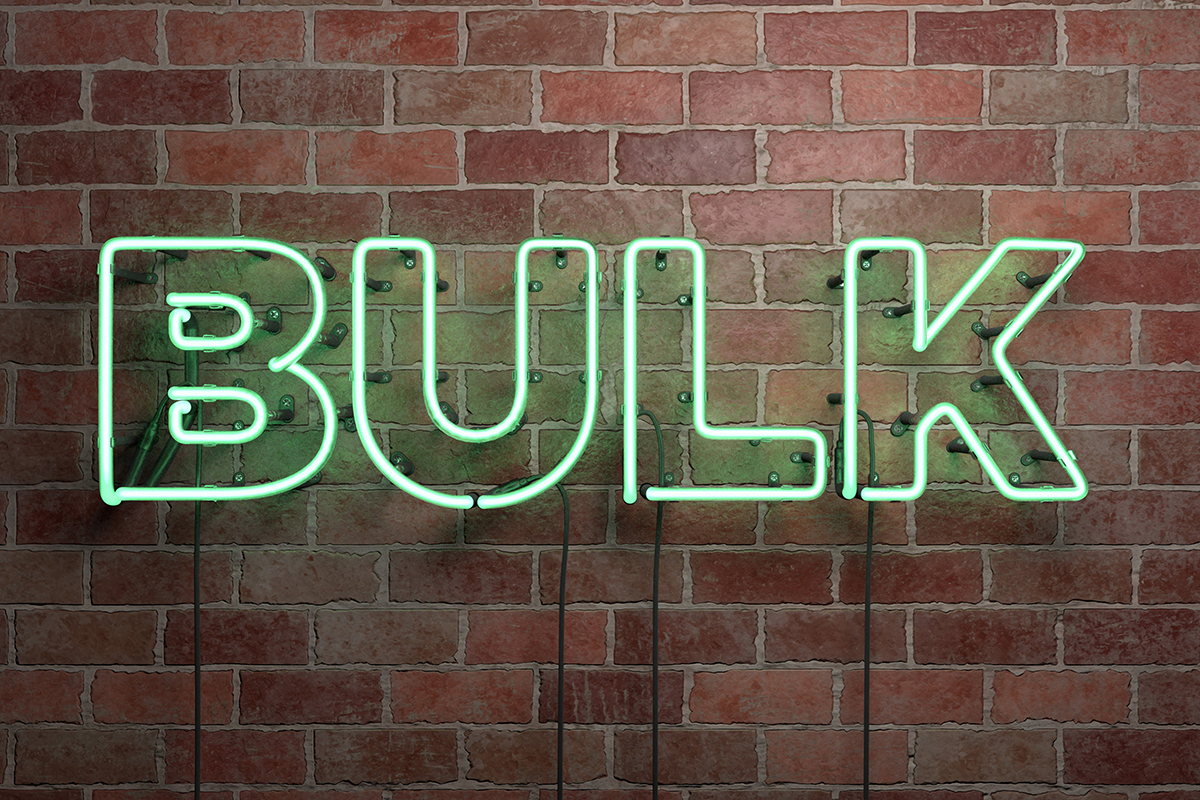

Hello. I have a couple of questions on diet and nutrition if I may ask. I’m an 18-year-old male. I currently weigh ~143-146 lbs. I want to take on bulking but I’m not sure on what meal plan to use. Would you be able to help me out or point me in the right direction?Currently I have a full-time job with overtime, but I still manage to go to the gym almost every day even though I’m tired. I eat breakfast around 4am before work, pack myself 2 lunches, and also eat dinner around 6-8pm. I greatly appreciate any advice I can get from you guys. Couldn’t be happier with the gyms and the sauna by the way. Thanks
– Joshua A.

Thanks for the compliment! A specific meal plan would depend on your lifestyle and food preferences in addition to your anthropometrics and weight gain goals. Working up a meal plan from scratch isn’t daunting – see our article How to Create a Meal Plan. You’d want to focus on increased calories and protein. That said, I realize following an already set list is desirable. If you’re set on that, I’d suggest a mass-building meal plan developed by a sports nutritionist such as a Certified Specialist in Sports Dietetics (CSSD).
My top diet tips for bulking include:
Time it right. Fuel your muscles properly pre- and post-workout to capitalize on the surge of hormones driving anabolism. The nutrition window to boost protein synthesis is considered about 30 minutes before and after weight training. Easy to digest lean proteins and low-fiber carbohydrates are the prime choices. Examples are whey shakes, egg whites, poultry breast, bagels, and pretzels.
Resources:
– Debbie J., MS, RD
This article should not replace any exercise program or restrictions, any dietary supplements or restrictions, or any other medical recommendations from your primary care physician. Before starting any exercise program or diet, make sure it is approved by your doctor.
Some questions have been edited for length and/or clarity.
 Have a nutrition question? Our registered dietitian is ready to help!
Have a nutrition question? Our registered dietitian is ready to help!
Email nutrition@lafitness.com or submit your question below and it may be featured in an upcoming article!
Does liberally salting your food help you pump more iron in the gym? Registered Dietitian, Debbie James, investigates the claims!
Debbie James, RDN, helps answer a question about energizing snack options to pull athletes through the second half of a high energy workout.
Registered Dietitian, Debbie James, helps answer a reader’s question about a good nutrition guide for a healthy pregnancy.
Be the first to know about exclusive
content, deals and promotions